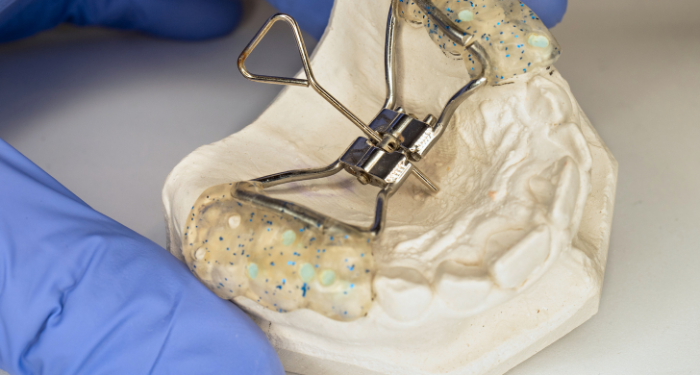
There’s a lot of lingo in the orofacial myofunctional therapy world, and sometimes we forget that we may not have spelled it all out for newer clinicians.
Maybe you’re not new to oral motor or feeding therapy but perhaps you’ve never been quite sure what “oral resting posture” really means.
So, let’s clear it up. Would you be able to identify correct (or disordered) oral resting posture if you saw it?
What Is Oral Resting Posture?
In simple terms, oral resting posture refers to how the mouth, tongue, and jaw naturally rest when a person isn’t eating, speaking, or swallowing.
Correct oral rest posture looks like this:
- The entire tongue rests gently against the palate, with the tip of the tongue sitting at the alveolar ridge (that small bump just behind the teeth). The tongue should rest there, not press into the teeth.
- Lips are closed (no gap, not even a millimeter).
- Teeth are slightly apart.
- Breathing happens quietly through the nose.
Why does this matter so much?
Because this resting position influences nearly everything we do: sleep, eating, breathing, speech, and even nervous system regulation through the vagus nerve, which connects to the palate.
When oral resting posture is off, it can create a domino effect that impacts multiple systems.
How to Assess Oral Resting Posture
This is simple. Observation is your best friend here.
Throughout the day, notice:
- Are the lips sealed at rest?
- Where is the tongue when they’re not eating or talking?
- Are the teeth touching, or slightly apart?
You can also encourage parents to take a quick peek an hour or two after their child falls asleep. Sometimes a child looks fine during the day but mouth-breathes at night—an important clue since we spend 6–12 hours a night sleeping. That’s a long time for a disordered pattern to persist.
Chronic mouth breathing during sleep can signal bigger airway issues worth exploring.
Treatment & Referral
The treatment approach depends on the child’s age and underlying cause.
- Ages 5 and up (including adults): Myofunctional Therapy
- Ages 4 and under: Feeding therapy (by an SLP or OT with expertise in oral motor and feeding)
If you suspect that oral resting posture isn’t correct, refer for a screening or evaluation.
Red Flags to Watch For
- Mouth breathing
- Chapped lips or drooling
- Chronic nasal congestion
- Scalloped edges of the tongue
- High or narrow palate
- Tongue resting low in the mouth
- Fatigue upon waking
- Dark circles under the eyes
- Snoring or restless sleep
- Crooked or crowded teeth
- Messy eating
Understanding the cascading effects of disordered posture helps us see why early intervention can make such a powerful difference.
Oral Resting Posture Myths vs. Facts
Myth: It doesn’t affect overall health, so it doesn’t matter.
Fact: Incorrect oral resting posture can contribute to sleep-disordered breathing, behavioral changes, and even cognitive challenges.
Myth: The tongue should rest on the floor of the mouth.
Fact: The tongue should rest fully on the palate. It helps shape the palate, support nasal breathing, and stabilize the jaw.
Myth: If a child has straight teeth, they must have good oral resting posture.
Fact: Straight teeth don’t always equal healthy function. A child can have straight teeth and still swallow incorrectly, rest their tongue low, or mouth-breathe.
Need a Mentor?
Inside The Myo Membership® (best for ages 5+) and The Pediatric Feeding Hub™ (best for infants & toddlers), you’ll get:
- Live mentorship from experienced clinicians
- Access to HallieAI for on-demand case support
- Practical strategies you can use right away in your sessions
These aren’t “one-size-fits-all” memberships. They’re built to give you confidence in screening, referring, and supporting every child who walks through your door.
Because when we help kids find the right resting posture, we’re not just improving their oral function. We’re supporting better sleep, behavior, and overall health for life.


